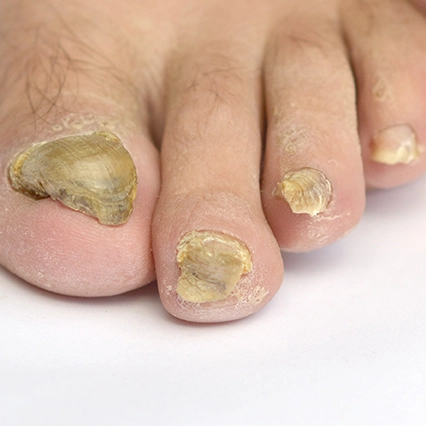EADV 2024: Atopic Dermatitis and Eczema in the Elderly Population are Distinct Entities
Speaker - Sussane Radonjic
Severe flares of atopic dermatitis can be associated with blood hypereosinophilia (BHE). Eosinophilic dermatoses are other diseases in which BHE are frequently observed. Among the eosinophilic associated diseases presenting on the skin, the lymphocytic variant of hypereosinophilic syndrome is particularly important. This variant presents significant relevance, often showing eczema-like skin lesions primarily in older adults or young adults, with no cases reported in children. The syndrome begins as a benign lymphoproliferative disorder characterized by T cells that produced cytokines leading to eosinophil activation and skin infiltration. The eosinophils displayed different surface protein expressions and could be clonal or non-clonal. In some instances, the disease progressed to lymphoma, which required careful patient monitoring. Eczema in the elderly raised questions regarding its classification as atopic dermatitis. Findings indicated a male predominance among these patients, with one-third lacking a history of atopy or atopic dermatitis. Diagnosis as atopic dermatitis was considered after ruling out differential diagnoses, including infections, cutaneous T-cell lymphomas, autoimmune blistering diseases, drug reactions, and contact allergies.
Data from a retrospective analysis were obtained from patients with blood hypereosinophilia who presented to a hospital's dermatology, hematology, and allergology/immunology departments. Nearly 200 patients were included over seven years. The analysis encompassed clinical manifestations, demographics, personal history, laboratory findings, drug intake, and diagnoses, aiming to identify different presentation patterns to optimize therapeutic and diagnostic algorithms through an interdisciplinary approach. Results indicated a slight male predominance, with a male-to-female ratio of 1.46 and a mean age of 67. Eczema was the most common presentation in over half of the patients, and two-thirds experienced pruritus. While some patients had a history of atopy, not all did. A latent class (LC) analysis identified three distinct classes: LC1, LC2, and LC3. LC1 and LC3 showed a high conditional probability of eczema and pruritus, whereas LC2 exhibited minimal skin manifestations and pruritus. LC1 had a low incidence of atopy, while LC3 demonstrated a significant history of atopy. Additionally, LC3 lacked any tumors in personal history. The conditional probability of eczema was 1 for both LC1 and LC3, while atopy was present in personal history in only 0.061 of LC1 compared to nearly one in LC3. The data further underscored the distinct characteristics of LC1 and LC3 concerning eczema.
LC1 and LC3 exhibited notable differences in age and gender distribution. LC1 had a mean age of 78 years, while LC3 had a mean age of 40 years, demonstrating a highly significant age difference when LC3 was used as the reference in a multivariate analysis. Gender distribution also varied, with LC1 showing a male predominance (male-to-female ratio of 1.93), while LC3 had a nearly equal distribution of genders. In summary, LC1 presented primarily in elderly individuals with eczema and minimal personal history of atopy, and a notable male predominance, with some patients having a history of tumors. In contrast, LC3 included younger patients with eczema and a significant history of atopy, with no reported tumors and equal gender distribution. Further analysis of eczema in patients with hypereosinophilia highlighted several differential diagnoses. Eczema patterns were evaluated, identifying atopic dermatitis, contact dermatitis, cutaneous T-cell lymphoma, hypereosinophilic syndrome, and scabies as potential diagnoses. Notably, bullous pemphigoid was also considered due to its eczema-like presentations. The distribution of underlying diagnoses varied between the two classes. In LC3, atopic dermatitis was the most common diagnosis, while in LC1, the hypereosinophilic syndrome was the most frequent, followed by autoimmune diseases and a substantial number of cases categorized as eczema of undetermined origin.
The multivariate analysis indicated a significant difference in the occurrence of atopic dermatitis between the classes, with hypereosinophilia approaching statistical significance. It is important to note that patients with hypereosinophilia in LC3 were included in the analysis. Some of these younger patients presented with eosinophilic skin diseases due to immunosuppression or idiopathic hypereosinophilic syndrome without skin manifestations. Excluding this subgroup revealed that nearly all patients in LC3 with hypereosinophilia had atopic dermatitis. Autoimmune diseases tended to be more frequent in LC1, along with a notable presence of eczema of undetermined origin, which was exclusively observed in the older population of LC1. Further examination of the age distribution of skin diseases associated with hypereosinophilia and eczema revealed two groups of atopic dermatitis patients: younger adults and another group around 50, aligning with established knowledge about atopic dermatitis. Notably, patients with eczema of undetermined origin were significantly older than those in the atopic dermatitis group. The age of patients with hypereosinophilic syndrome and those with bullous pemphigoid was comparable, highlighting the distinct demographic characteristics of these conditions.
The history of atopy revealed that nearly all patients with atopic dermatitis had a prior diagnosis of the condition. At the same time, those with eczema of undetermined origin rarely reported any history of atopy. Additionally, concomitant atopic diseases were infrequently observed in this group. The distribution of these findings closely resembled those seen in patients with hypereosinophilic syndrome. In terms of gender distribution, atopic dermatitis exhibited an equal gender ratio, whereas eczema of undetermined origin and hypereosinophilic syndrome were more frequently reported in males. The male-to-female ratio for eczema of unknown origin was approximately 1:1.5, while hypereosinophilic syndrome was about 1:4. A detailed analysis of diagnostic parameters revealed significant differences among the groups. The parameter SX1, representing specific IgE to allergens, served as a laboratory marker for atopy. Direct immunofluorescence was predominant in bullous pemphigoid patients, nearly all undergoing this analysis. Additionally, some bullous pemphigoid patients exhibited abnormal T cells during immunophenotyping, consistent with the understanding that lymphocytic hypereosinophilic syndrome can present similarly. Hyper eosinophilic patients displayed typical T cells in immunophenotyping, with some also identified as atopic, indicating that atopy is not mutually exclusive from hypereosinophilia.
In the group of patients with eczema of undetermined origin, direct immunofluorescence testing was performed in nearly all cases, with some results indicating linear deposits of C3 and IgG, suggesting a possible diagnosis of bullous pemphigoid. However, immunophenotyping was notably absent, leaving uncertainty regarding lymphocytic hypereosinophilic syndrome in these patients. When summarizing the findings related to eczema of undetermined origin, notable similarities were observed with the lymphocytic hypereosinophilic syndrome, particularly concerning age, personal history of atopy, and gender distribution. These characteristics contrasted sharply with those of patients suffering from atopic dermatitis, highlighting distinct differences in demographics and clinical presentation. The lack of comprehensive diagnostic assessments may account for classifying these cases as "undetermined." Therefore, it is recommended that a thorough diagnostic workup be conducted for elderly patients presenting with eczema and blood hypereosinophilia, irrespective of any prior history of atopic dermatitis. This workup should include immunophenotyping and potentially T-cell receptor rearrangement analysis to enhance diagnostic accuracy.
Controlling the underlying inflammation is paramount when discussing the management of pruritus in patients with dermatitis. For individuals with the lymphocytic variant of the hypereosinophilic syndrome, targeting interleukin-5 (IL-5) has shown effectiveness in alleviating itching. The European Task Force on Atopic Dermatitis established the Atopy Patch Test approximately 20 years ago. It employs intact protein allergens to elicit reactions in patients who may not respond to standard prick tests, allowing for the identification of sensitized individuals. Applying this test to the current patient population could provide insights, although the primary drivers of their condition are likely related to T and B cell activity rather than allergen sensitization. Thus, while the potential benefits of the Atopy Patch Test should be considered, the focus should remain on the immune mechanisms underlying the disease.
33, European Academy of Dermatology and Venereology Congress, 25-28 September 2024, Amsterdam




